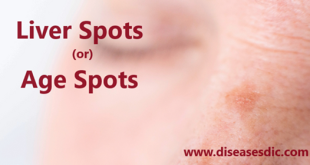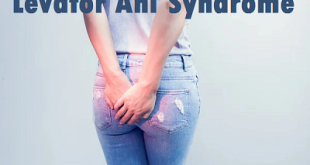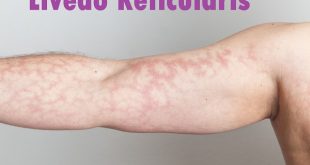Lichen Planus – Overview
Lichen planus is a condition that can cause swelling and irritation in the skin, hair, nails and mucous membranes. On the skin, LP usually appears as purplish, itchy, flat bumps that develop over several weeks. In the mouth, vagina and other areas covered by a mucous membrane, it forms lacy white patches, sometimes with painful sores.
Most people can manage typical, mild cases of LP at home, without medical care. If the condition causes pain or significant itching, you may need prescription drugs. More importantly, it isn’t contagious.
Pathophysiology of lichen planus
Lichen planus is a cell-mediated immune response of unknown origin. It may be found with other diseases of altered immunity; these conditions include ulcerative colitis, alopecia areata, vitiligo, dermatomyositis, morphea, lichen sclerosis, and myasthenia gravis.
What causes lichen planus?
What causes most cases of lichen planus remains unclear. It is an autoimmune disease. This means the person’s immune system reacts as though the skin and other parts of the body are foreign. When this happens, the body starts to attack itself. To find out whether lichen planus is an autoimmune disease, we need more research.
We do know the following:
Some medicines can cause a rash. These medicines include diuretics (treatment for high blood pressure and heart disease) and medicine taken to prevent malaria. Be sure to tell your dermatologist about every medicine that you take.
In the mouth, a metal filling may be the cause. This is rare, but it can happen. If this is the cause, replacing the metal filling with a non-metal filling will get rid of the LP.
A rare type of LP, familial bullous lichen planus, runs in families. Other forms do not seem to run in families.
There may be a link between LP and infection with the hepatitis C virus. Many people with hepatitis C also have LP. Your dermatologist may check to see whether you have this virus.
What are the risk factors?
LP can affect humans of any age or race. However, it is more common among:
- Middle-aged adults
- Females, especially oral lichen planus
- Patients with liver diseases, such as hepatitis C or cirrhosis
Symptoms of lichen planus
Some of the most common symptoms include the following:
- Purplish-colored lesions or bumps with flat tops on your skin or genitals
- Lesions that develop and spread over the body over the course of several weeks or a few months
- Itching at the site of the rash
- Lacy-white lesions in the mouth, which may be painful or cause a burning sensation
- Blisters, which burst and become scabby
- Thin white lines over the rash
The most common type of LP affects the skin. Over the course of several weeks, lesions appear and spread. The condition usually clears up within 6 to 16 months.
Less commonly, the lesions can occur in areas besides the skin or genitals. These may include:
- Mucous membranes
- Nails
- The scalp
There are also variations of the condition more common in the Middle East, Asia, Africa, and Latin America.
What are the complications of lichen planus?
- LP can be difficult to treat if it develops on your vagina or vulva. This can lead to pain, scarring, and discomfort during sex.
- It can also increase your risk of squamous cell carcinoma. The increase in risk is small, but you should see your doctor for routine skin cancer examinations.
Diagnosis of Lichen Planus
Your doctor makes a diagnosis based on your symptoms, your medical history, a physical examination and, if necessary, the results of lab tests. These tests may include:
- Your doctor removes a small piece of affected tissue for examination under a microscope. The tissue is analyzed to determine whether it has the cell patterns characteristic of lichen planus.
- Hepatitis C test. You may have your blood drawn to test for hepatitis C, which is a possible trigger
- Allergy tests. Your doctor may refer you to an allergy specialist (allergist) or dermatologist to find out if you’re allergic to something that can trigger.
Other tests may be needed if your doctor suspects you have any of the several variations of lichen planus, such as the type that affects the esophagus, genitals, ears or mouth.
What is the treatment for lichen planus?
Treatment is not always necessary. Local treatments for the symptomatic cutaneous or mucosal disease are:
- Potent topical steroids
- Topical calcineurin inhibitors, tacrolimus ointment, and pimecrolimus cream
- Topical retinoids
- Intralesional steroid injections
Systemic treatment for widespread lichen planus or severe local disease often includes a 1 to 3-month course of oral prednisone, while commencing another agent from the following list:
- Acitretin
- Hydroxychloroquine
- Methotrexate
- Azathioprine
- Mycophenolate mofetil
- Phototherapy
In cases of oral lichen planus affecting the gums with contact allergy to mercury, it may resolve on replacing the fillings with composite material. If it is not due to mercury allergy, removing amalgam fillings is very unlikely to result in a cure.
Anecdotal success is reported from long courses of oral antibiotics and oral antifungal agents. Lichen planopilaris is reported to improve with pioglitazone.
Lifestyle and home remedies
Self-care measures can help reduce the itching and discomfort. These include:
- Soaking in a bathtub with colloidal oatmeal (Aveeno, others), followed by a moisturizing lotion
- Applying cool compresses
- Using an over-the-counter hydrocortisone cream or ointment, containing at least 1 percent hydrocortisone (if you’re not using a prescription topical corticosteroid)
- Avoiding scratching or injuring your skin
For oral lichen planus, good oral hygiene and regular dentist visits are important. You can help reduce the pain of mouth sores by avoiding:
- Smoking
- Drinking alcohol
- Consuming spicy or acidic food and drink
Alternative medicine
A couple of small clinical trials have suggested the benefit of aloe vera gel for treating lichen planus of the mouth and vulva.
Look into alternative medicine approaches that help reduce stress, as stress can worsen the signs and symptoms of lichen planus.
Talk with your doctor before trying an alternative treatment. Some alternative medicines or vitamin supplements result in serious adverse reactions when combined with prescription medicines.
How to manage or live with the condition (Prevention)?
You can’t do much to prevent, but once you affected, you can take steps to keep it from getting worse.
- Avoid injuries to your skin.
- Apply cool compresses instead of scratching.
- Limit the stress in your life.
- For oral lichen planus, stop smoking, avoid alcohol, maintain good oral hygiene, and avoid any foods that seem to irritate your mouth.
It is not a dangerous disease, and it usually goes away on its own. However, in some people, it may come back.
 Diseases Treatments Dictionary This is complete solution to read all diseases treatments Which covers Prevention, Causes, Symptoms, Medical Terms, Drugs, Prescription, Natural Remedies with cures and Treatments. Most of the common diseases were listed in names, split with categories.
Diseases Treatments Dictionary This is complete solution to read all diseases treatments Which covers Prevention, Causes, Symptoms, Medical Terms, Drugs, Prescription, Natural Remedies with cures and Treatments. Most of the common diseases were listed in names, split with categories.








I have just having fungal infection on my thighs and effected to penis and so irrigation
Many of the antifungal creams recommended for a penile infection include:
miconazole (Lotrimin AF, Cruex, Desenex, Ting Antifungal)
imidazole (Canesten, Selezen)
clotrimazole (Lotrimin AF, Anti-Fungal, Cruex, Desenex, Lotrimin AF Ringworm)
can it cause dead when serious care and check Is take,
No, it won’t cause death if serious care is taken.
I have lichan planus. you can tell me how to remove my lichan planus.
please read it from the treatment section. it is elaborated very clearly.
fungal infections in use medicine
(fluconzole+hydroxyzine)
rashes & allergy at all skin, itching increasing day by day. plz advice treatment. parien age is 50 years
This may be the symptoms of immune disorders.
As an initial step kindly consult a Dermatologist for a better diagnosis of your illness and get appropriate treatment.
I have safaring lichen planus in 12 years use all medicines no useplease suggestion me
opt for natural remedies
I have seafaring 10 years in lichen planus please suggest me
For lichen planus, consult with a dermatologist for an accurate diagnosis and personalized treatment plan. Options may include topical corticosteroids, oral medications, phototherapy, or topical immunosuppressants to manage inflammation and itching. Additionally, antihistamines can help alleviate symptoms. Follow your healthcare professional’s advice and attend regular appointments for optimal management.
What about lichen sclerosis
Lichen sclerosus is characterized by thin, white patches often affecting genital areas, more common in women, with an increased risk of skin cancer. Lichen planus presents as purple, flat-topped bumps, can occur on various body parts, and is not typically associated with an elevated cancer risk. For accurate diagnosis and management, consult a dermatologist or healthcare professional if you suspect either condition.